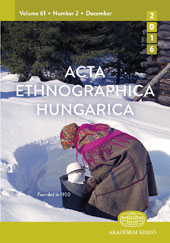WITCH OR DEMON? FAIRIES, VAMPIRES, AND NIGHTMARES IN EARLY MODERN SPAIN
WITCH OR DEMON? FAIRIES, VAMPIRES, AND NIGHTMARES IN EARLY MODERN SPAIN
Author(s): Fabián Alejandro CampagneSubject(s): Cultural history, Customs / Folklore, 13th to 14th Centuries, 15th Century
Published by: Akadémiai Kiadó
Keywords: witchcraft; infanticide; vampirism; nightmare; faires; Pyrenees; the Double;
Summary/Abstract: Any scholar devoted to the study of the witch figure in Early Modern Spain will soon realize that the Iberian bruja is a peculiar character in European folklore. The Spanish bruja was a malevolent agent specialized, almost exclusively, in the murder of newborn babies. Her infanticide compulsion was associated with vampirism. She possessed the extraordinary capacity to enter rooms through the smallest chinks in doors or walls. She had amazing metamorphic powers. When she attacked the sleeping adults, she threw herself upon them, crushing them with her weight. On occasions, she was considered the victim of a tragic destiny from which it was impossible to escape. Some specific behavior, such as drinking the wine kept in cellars or washing clothes at the side of rivers, was also attributed to her. In these traits, the specialist in Mediterranean folklore and comparative mythology immediately discovers the basic characteristics of a series of clearly identified mythical figures: the child-killing demon, the vampiric revenant, the fairy society and the Nightmare, specific avatars of the archaic mythology of the Double and the nocturnal spirits of the mahr-type. We can postulate, then, that the Spanish bruja, before embodying in Spain the figure of the satanic worshipper at the sabbat, gave name to a Pyrenean variant of the pan- European nocturnal demon. The evidence provided by diverse peninsular testimonies about the original meaning of the terms bruxa and xorguina, between the decades of 1280 and 1480, cover in an almost perfect way the spectrum of activities attributed to those fiends of the night. The historical evidence reinforces, then, the elements provided by the morphological analysis and by comparative mythology.
Journal: Acta Ethnographica Hungarica
- Issue Year: 53/2008
- Issue No: 2
- Page Range: 381-410
- Page Count: 30
- Language: English
- Content File-PDF

